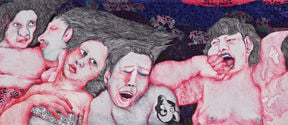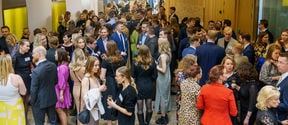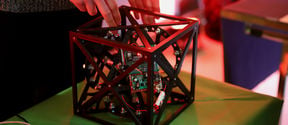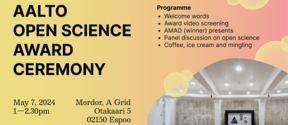Markku Tinnilä actively leads business projects that put theory into practice
Who are you and what do you do?
I am Markku Tinnilä, Senior University Lecturer in Logistics in the School of Business’s Department of Information and Service Economy. I am responsible for the bachelor's programme in our Department and I also teach in the master's programme. I also have plenty of administrative work to keep me busy.
I’ve worked together with engineers for thirty years, and it’s been good to get familiar with each other’s views and opinions. My longest history of cooperation is with the staff of the Department of Industrial Engineering and Management. To begin with, we invited each other to give guest lectures, and students from our school visited their department and vice versa. Our cooperation has increased and strengthened over the years. At the moment, we have a joint course: Introduction to Services.
I began at the School of Business as a student in 1979. My major back then was merchandise technology. In the 1980s, I worked in a factory for a couple of years in Denmark, and there I learnt a lot about production and also learnt to speak Danish. In 1986, I returned and began work as an assistant at the school. For ten years, I directed research in the Institute of Electronic Commerce at LTT (LTT-Research Ltd, formerly Liiketaloustieteellinen tutkimuslaitos), so I have always worked either in the School of Business or in close connection with it.
What does good teaching entail in your opinion?
Multiform teaching is good. Lectures are also useful, especially when there is a need to explain matters to students. For basic studies, for example, lecturing does the job. Tasks given to students should be varied. I’ve participated actively in leading CEMS and business projects. Projects which involve research and reporting for businesses based on the businesses’ actual needs are an excellent form of practical work.
Multidisciplinarity and combining different fields are two things which we should have a lot more of. I’ve supervised theses on ship building about a dozen times and I myself have learnt in the process about ship equilibrium and slosh dynamics. It’s interesting to see how the same topic can be given to three students from different fields, and they each approach the subject from a different perspective.
How have you developed the teaching at Aalto?
I am very open to multidisciplinarity, and I'm happy to try out anything. For example, I’ve trailed electronic exams together with Professor Matti Rossi. I have thought about how new technologies and practices could be applied first in a particular department rather than immediately to the whole of Aalto. If this could be done, then introducing new operating practices would certainly go quicker.
The challenge for teaching is the large group sizes. If there are 70 to 100 students at a lecture, then there is little room for individual supervision and interaction. On the Case Studies course, students have the opportunity to book a consultation with us, the teachers, and this operating model has turned out to be good.
According to our vision, we are building a sustainable society driven by innovation and entrepreneurship. How is this visible in your teaching work?
Logistics is a central part of the recycling process, and this comes through strongly on our courses and in what we discuss together with the students. Efficiently implemented recycling is a real challenge. It’s easy to come up with new ideas, and I give training on tools for doing this. But screening, meaning the trailing out of new ideas, is of prime importance. At the same time, one should find out what people want and what they are willing to pay for it – in other words, where the cash flow is going to come from.
Where do you get strength and inspiration for your work as a teacher?
In my free time, I prefer to do something completely different to what I do for my work. I've been attending painting courses, where I get to concretely see the results of my labour. I like to read books in the evenings – history books, for example.
The President of Finland Sauli Niinistö granted the Knight of the Order of the White Rose of Finland to Markku Tinnilä on the Finnish Independence Day 6 December 2016.
- Published:
- Updated:
Read more news

Aalto ARTS alum Vidha Samya’s artwork featured at the Venice Biennale 2024
The Pavilion of Finland presents ‘The pleasures we choose’ at the 60th International Art Exhibition – La Biennale di Venezia until 24 November 2024.
Mikkeli campus alumni celebrate the 35th anniversary of the International Business programme
More than 200 alumni of the BBA/BScBA programme attended the ceremony at the School of Business in Otaniemi.
IoT Forge donates EUR 1 million to the School of Engineering
The donation will be used for research and education on the Industrial Internet and digital twins.